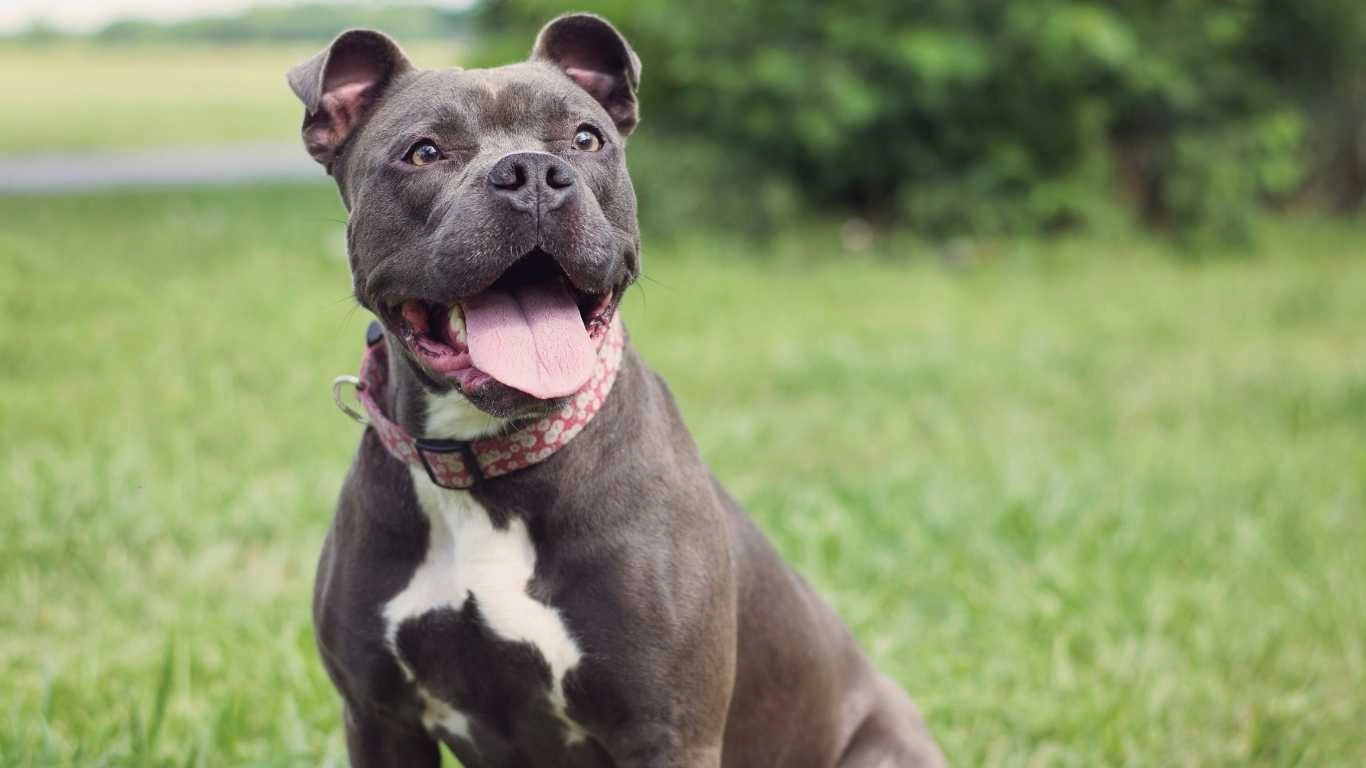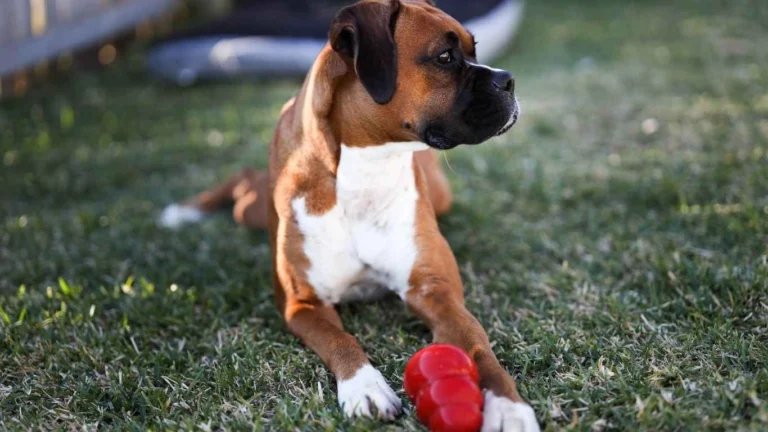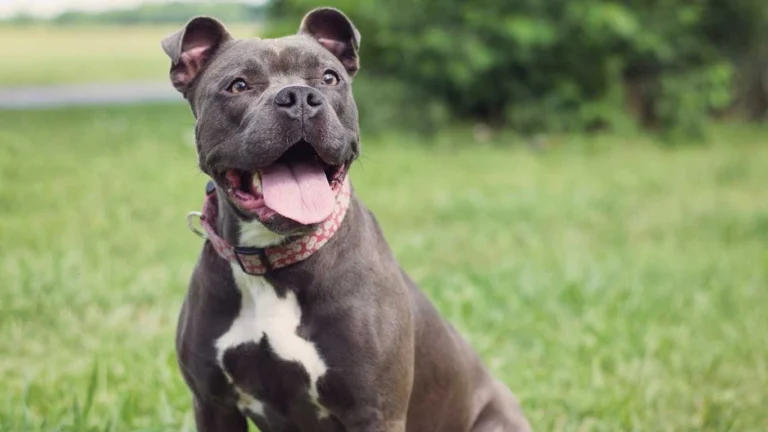How to Make Homemade Grain-Free Dog Food Your Dog Will Love (Easy Guide)
If you’ve ever wondered how to make homemade grain-free dog food that’s healthy, delicious, and budget-friendly, you’re not alone. When I first started working as an Animal Care Specialist at a local pet clinic and later at a shelter, I saw firsthand how many dogs struggled with allergies, itchy skin, and upset tummies — often tied to grains in their diet. That experience really opened my eyes to the power of fresh, simple ingredients. Making grain-free dog food at home might sound intimidating at first, but trust me, once you get the hang of it, it’s actually pretty fun — and your dog will thank you with tail wags and happy dances!
Why Go Grain-Free for Your Dog?

Not every dog needs to be grain-free, but if your pup suffers from allergies, sensitive digestion, or chronic ear infections, cutting out grains can make a huge difference. I’ve seen it happen dozens of times with shelter rescues that came in rough shape — switching to a grain-free, fresh diet turned their health (and mood!) around dramatically.
Common Signs Your Dog Might Need a Grain-Free Diet
- Itchy, flaky skin or hot spots
- Frequent ear infections
- Chronic diarrhea or soft stool
- Excessive paw licking or chewing
- Unexplained weight gain or loss
Of course, it’s always smart to chat with your veterinarian before making any major changes. But if you’ve noticed any of these issues, switching to a homemade grain-free dog food recipe could be a game changer.
The Real Benefits of Homemade Grain-Free Dog Food

When you whip up your dog’s meals at home, you’re in full control of every ingredient. No mystery fillers, no sketchy by-products, and definitely no hidden grains sneaking in where they don’t belong. Here are just a few of the big wins you’ll notice:
1. Better Ingredient Quality
Fresh meats, real veggies, healthy oils — that’s what you want fueling your dog’s body. Store-bought kibble (even the fancy ones) can’t always match the quality of homemade meals. Plus, you can pick proteins your dog loves and rotate them to keep meals exciting!
2. Customized Nutrition
Every dog is different. Some need a little extra protein, some benefit from joint-supporting goodies like fish oil. When you’re making the food yourself, you can adjust things based on your dog’s specific needs, life stage, or health goals. It’s like a custom meal plan made with love.
3. Fewer Allergic Reactions
Since grains like corn, wheat, and soy are common allergens for dogs, removing them often leads to fewer itchy skin flare-ups and better digestion. I can’t tell you how many times I’ve seen a rescue dog’s coat go from sad and scruffy to glossy and gorgeous after just a few weeks on a homemade, grain-free diet.
What You Need to Know Before You Start

Before you bust out the apron and start cooking, there are a few important things to keep in mind to make sure your homemade grain-free dog food is truly balanced and beneficial.
Don’t Wing It on Nutrition
Dogs require specific amounts of protein, fat, vitamins, and minerals. Just throwing together chicken and carrots won’t cut it in the long run. That’s why it’s so important to either work with a vet nutritionist or carefully follow a trusted recipe that’s been formulated to meet AAFCO (Association of American Feed Control Officials) standards.
Essential Ingredients for Grain-Free Meals
A solid homemade dog food will usually include:
- High-quality protein (chicken, beef, turkey, lamb, fish)
- Low-starch vegetables (spinach, broccoli, zucchini, pumpkin)
- Healthy fats (coconut oil, olive oil, salmon oil)
- Calcium source (like ground eggshell or a supplement)
- Optional extras (like probiotics or joint supplements)
One quick note from my own kitchen adventures: I always make sure to rotate the protein source every couple of weeks. It keeps things interesting for my dogs and helps cover a broader range of amino acids and nutrients naturally.
Foods to Absolutely Avoid
Not all “people food” is safe for dogs. Here’s a quick reminder of ingredients that should never, ever find their way into your dog’s bowl:
- Onions and garlic (toxic to dogs)
- Chocolate (very dangerous)
- Grapes and raisins (can cause kidney failure)
- Macadamia nuts
- Avocado (especially the pit and skin)
When in doubt, always double-check before adding a new ingredient. It’s better to be safe than sorry when it comes to your best friend’s health!
How to Make Homemade Grain-Free Dog Food: Step-by-Step

Alright, now that we’ve covered the why and the basics, let’s roll up our sleeves and get into the real fun: actually making homemade grain-free dog food! Honestly, once you try it a few times, it becomes second nature — kind of like meal prepping for yourself, just with a little less seasoning.
Step 1: Gather Your Ingredients
Start by picking a lean protein source like turkey, chicken, or beef. Then choose a few safe veggies — I personally love using spinach, green beans, and pumpkin because they’re easy to digest and packed with nutrients.
- Protein: Ground turkey, chicken thighs, beef stew meat
- Veggies: Zucchini, carrots, peas (in moderation)
- Fats: A drizzle of olive oil or salmon oil
- Extras: Ground eggshell powder for calcium
Quick Tip: I always buy in bulk when proteins go on sale and freeze portions. It saves a ton of money over time!
Step 2: Cook the Meat
In a large skillet or pot, brown your meat over medium heat. No need for extra oil — dogs don’t need the added fats you might normally use in your own meals. Just cook until no longer pink. If there’s a lot of grease, drain it off to keep things light and healthy.
Step 3: Add the Veggies
Once the meat’s cooked, toss in your chopped veggies. I usually add a splash of water or low-sodium bone broth to help them steam a bit. Let everything simmer together for about 10-15 minutes until the veggies are tender but not mushy. Dogs love a little texture!
Step 4: Mix in Healthy Fats and Supplements
After cooking, stir in your healthy fat (like a spoonful of coconut oil) and any supplements your pup needs. Let the food cool completely before serving or storing.
Step 5: Portion and Store
I like to measure out portions into reusable containers or freezer bags. Homemade food usually stays good in the fridge for 3-5 days, and it freezes beautifully for up to 2 months.
My Favorite Homemade Grain-Free Dog Food Recipe

Over the years, I’ve tweaked and tested tons of recipes. Here’s one my dogs go absolutely bonkers for — even the picky eaters at the shelter would gobble this up!
Turkey and Veggie Power Bowl
- 2 pounds ground turkey
- 1 cup chopped spinach
- 1 cup diced carrots
- 1/2 cup peas
- 2 tablespoons coconut oil
- 1 teaspoon ground eggshell powder (for calcium)
- Brown the turkey over medium heat until fully cooked.
- Add spinach, carrots, and peas. Stir well and cook until veggies soften.
- Turn off heat and mix in coconut oil and eggshell powder.
- Cool completely before portioning out meals.
Pro Tip: You can swap out the turkey for chicken or beef depending on what’s available or what your dog prefers. Rotating proteins also helps prevent food sensitivities from developing over time.
How Much Homemade Food Should You Feed?

This is one of the most common questions I get asked — and honestly, it’s super important. Feeding too much or too little can lead to weight issues or nutrient imbalances, even if the food itself is spot-on.
General Feeding Guidelines
A good ballpark to start with is about 2% to 3% of your dog’s body weight per day, divided into two meals. For example:
- A 50-pound dog might eat around 1 to 1.5 pounds of food daily.
- Smaller breeds may need adjustments since they burn calories faster.
From my own experience: I always tell new pet parents to watch their dog’s body condition closely after switching to homemade food. If your pup seems a little pudgy, cut back slightly. If they’re acting extra hungry or losing weight, bump the portion size up a bit.
Special Considerations
Puppies, senior dogs, and dogs with medical conditions will have different needs. For example, active working dogs might need more calories, while senior pups often need fewer. Always check with your vet or a canine nutritionist to fine-tune the feeding plan, especially if you’re making the switch for a health-related reason.
Common Mistakes to Avoid When Making Homemade Grain-Free Dog Food
As awesome as homemade diets are, there are a few pitfalls you’ll definitely want to dodge. Trust me — I’ve made a couple of these mistakes early on, and it’s so much easier to get it right the first time if you know what to watch for!
1. Forgetting to Balance the Meals
Meat alone isn’t a complete meal. Without veggies, calcium, and healthy fats, your dog can miss out on essential nutrients. It’s why following a recipe (or getting a recipe checked by a vet) is crucial.
2. Overloading on Treats
It’s easy to get into the mindset of “oh, it’s homemade, so it’s healthy!” But too many extras — even healthy ones — can unbalance your dog’s diet. Keep treats (including fruits and veggies) to about 10% of daily calories at most.
3. Using Unsafe Ingredients
Even experienced dog lovers sometimes forget that things like onions or raisins are a big no-no. Always double-check anything new you want to add to their meals!
4. Skipping the Transition Period
Switching from kibble to homemade food overnight can lead to upset stomachs. I always recommend a gradual transition over about 7-10 days, slowly increasing the homemade food while decreasing the kibble.
It’s a little bit of patience upfront for a lifetime of better health — so totally worth it!
Sample Weekly Menu for Homemade Grain-Free Dog Food

When you’re just starting out with how to make homemade grain-free dog food, figuring out what to feed each day can feel a little overwhelming. I remember staring at my fridge the first week thinking, “Okay… what now?” Having a simple plan helped me stay on track without overcomplicating things.
Here’s a basic weekly meal idea to get you started. Feel free to swap proteins and veggies based on what’s fresh, seasonal, or what your dog loves best.
- Monday: Ground turkey with spinach and pumpkin
- Tuesday: Beef stew meat with green beans and zucchini
- Wednesday: Salmon fillet with broccoli and carrots
- Thursday: Chicken thighs with cauliflower and peas
- Friday: Ground lamb with sweet potatoes and kale
- Saturday: Turkey hearts and livers (for organ meat day!) with mixed veggies
- Sunday: A lighter meal — scrambled eggs with spinach and a little cooked pumpkin
Personal note: I usually batch-cook two or three days’ worth at a time so I’m not tied to the stove every day. Prepping in batches saves so much time, and my dogs seriously get excited the second they see the meal containers coming out of the fridge!
Tips for Feeding Picky Eaters

Not every dog dives face-first into homemade food right away. Especially if they’ve been used to the addictive flavor enhancers in commercial kibble. (Kind of like asking a kid to pick broccoli over candy, right?) Here are a few tricks I’ve learned from experience:
1. Start with Familiar Flavors
If your dog loves chicken, start with a chicken-based homemade recipe. Familiar smells and tastes will help them feel more comfortable making the switch.
2. Gently Warm the Food
Heating the food slightly (just until it’s room temp) brings out those natural smells and makes the meal way more enticing. Just be careful not to serve it hot!
3. Add a Tiny Splash of Bone Broth
Unsalted bone broth is like magic for picky eaters. Drizzling a little over the meal can convince even stubborn pups to dig in. Just make sure the broth doesn’t contain onions or garlic!
4. Mix with a Little of Their Old Food at First
Transitioning gradually by mixing homemade food with their usual diet helps avoid digestive upset — and picky behavior. Decrease the old food a bit more each day.
In my shelter days, this slow blending method was a lifesaver for getting nervous or finicky rescues to accept better, healthier food.
Frequently Asked Questions About Homemade Grain-Free Dog Food
Can I feed my dog raw grain-free food instead of cooked?
Some pet owners swear by raw feeding. Personally, I always recommend lightly cooking meats to kill harmful bacteria unless you’re working closely with a veterinarian specializing in raw diets. Raw can be great, but it’s a whole different level of balancing nutrition!
How do I make sure my dog gets enough calcium?
Dogs need more calcium than you might think. You can add ground eggshell powder (super easy to make at home!) or a canine-specific calcium supplement. Skipping calcium can lead to serious health issues over time, so it’s not something to guess on.
What if I don’t have time to cook every week?
Batch cooking and freezing meals is the way to go. Set aside a few hours once or twice a month to make big batches. Freeze them in daily portions — it’s honestly easier than meal prepping for yourself!
Is grain-free good for every dog?
Nope — it depends on the dog. Some dogs do great with grains like oats or brown rice if they’re healthy and tolerate them well. How to make homemade grain-free dog food is most useful if your pup has specific allergies, sensitivities, or digestive issues. Always check with your vet if you’re not sure!
References
Disclaimer
The information provided in this article is based on my personal experience as an Animal Care Specialist and extensive research from trusted veterinary resources. However, every dog is different. Always consult with your veterinarian before making any significant changes to your dog’s diet, especially if they have specific health conditions or special nutritional needs.






